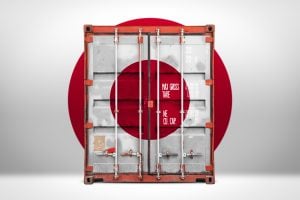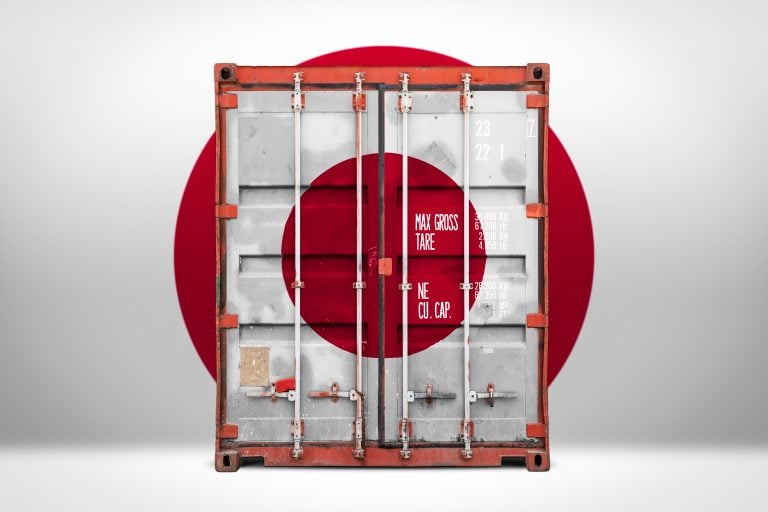High grades of caesium are found in pollucite mineralisation
There are only two operating commercial-scale caesium mines in the world, both owned by China
Lithium miners with LCT deposits often ignore its value
Burley Minerals has stumbled upon high-grade caesium containing pollucite at its Chubb project
Gallium, germanium and graphite… all have had export restrictions placed on them by the Chinese government; and industries that rely on critical minerals like caesium (Cs), may want to hedge their bets by diversifying where they’re getting their nectar from before they bring out the red tape on another element they dominate production of.
There are only two operating, commercial-scale deposits of caesium in the world, and the lion’s share of production is owned and operated by China.
Yes, it’s a by-product from lithium-caesium-tantalum (LCT) deposits, but miners consider it secondary to Li and a by-product that’s often wholly ignored for value – LCT mining accounts for just ~20% of global production.
There’s no other element that this Stockhead can think of where China’s hegemony is so absolute.
One of its mining arms, Sinomine, owns and operates the monster Tanco mine in Manitoba, Canada and contains about 350,000t or two-thirds of the world’s pollucite reserves, while it also owns Zimbabwe’s Bikita operation – giving it a near-monopoly on caesium-focused mining and processing.
Caesium or caesiout?
Primary play caesium mining operations are rare because of the scarcity of sizeable pollucite deposits, – the only mineral known to contain high grades (~8% is considered very economical) of Cs and found in very highly fractionated lithium-caesium-tantalum (LCT) pegmatites.
Although it has a large number of isotopes, naturally occurring caesium in pollucite consists exclusively of nonradioactive isotope 133 caesium.
Both types are used in oil and gas drilling for lubrication and refining, medical isotopes and atomic clocks for 5G communication devices, among others, and are largely processed in China and Albemarle’s chemical factory in Germany.
China turning the screws?
Supply chains could be stressed in the future and caesium is a likely candidate to be in the crosshairs.
China’s government is not new to economic coercion in the critical minerals space, it dates back more than a decade, when in 2010 it cut off Japan from its rare earths exports for a while because of a spat over a boating collision no less.
More recently, China moved to restrain exports of gallium and germanium, causing a scramble by industries to shore up other supplies and spurring mine development.
Graphite was next, with the Middle Kingdom imposing the same restrictions, albeit to a more plentiful commodity than the aforementioned.
READ MORE: Why Shaw thinks graphite stocks are a buy as China’s export ban spooks EV market
Yet if caesium falls to the same measures, China could seize upon its own foreign mining operations and send industries that rely on steady shipments into a barrel roll.
This further buttresses the case for the West diversifying supply chains of Cs.
So who’s ready to take the C out of LCT?
When Pioneer Resources opened the smaller-scale Sinclair mine in 2018 near Norseman in WA, it became the world’s third commercial caesium operation – yet finished production in 2020.
Its MD at the time David Crook said when they first announced grades from the first drill hole at Sinclair, phones started ringing from Europe and North America.
“We pretty quickly realised that demand was high and supply constrained and that we could make some money out of it,” Crook says.
“Sinclair was quick to get into production and the offtake partners were plenty, I don’t see demand having abated whatsoever – quite the opposite.
“Chemical processors and manufacturers are looking to diversify their supply chains, opening up a gap for new mines to come online.”
With that sort of experience under his belt, it’s no wonder he’s doing it again – this time as a non-exec director of small cap Burley Minerals (ASX:BUR) which is proving up its Chubb North lithium project in Quebec.
While on the hunt for Li, exploration results turned in very high grades of Cs in pollucite – around 8% in fact, giving it the potential to become the fourth ever commercial Cs mining operation in the world.
Earlier this week BUR produced assays showing high levels of both caesium and lithium, with 2.9m @ 6.8% Cs2) high-grade pollucite and 5.3m at 2.3% Li2O (including 2.3m at 3.9% Li2O) intersected immediately adjacent to the pollucite zone.
Assay data confirmed high-value pollucite within the southern extent of the spodumene-bearing Main Dyke and suggests more than 60m of strong caesium mineralisation which alternates with the spodumene within the pegmatite intersections.
Crook says the discovery of pollucite at the Main Dyke of Chubb Central, adjacent to spodumene mineralisation, greatly enhances the importance of the Chubb project to the company.
“To date, deposits of pollucite have not been large, but quality pollucite is a critical mineral of high value,” Crook says.
“One of those mines was the Sinclair caesium mine near Norseman, WA, which was profitably mined by Pioneer Resources when I was managing director.
“Pollucite has only been found in significant amounts in large, highly differentiated LCT pegmatite systems which bodes well for the prospectivity of the Chubb Project for further discoveries of LCT-related minerals.”
The post Is caesium in danger of becoming another critical mineral restricted by China’s hegemony? appeared first on Stockhead.





















+ There are no comments
Add yours